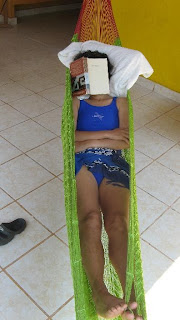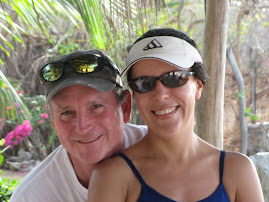Photo right: Mexicans in general work seven days per week.
 The Mexicans in general live close to the land. They grow and eat their local vegetables and fruit, which is always fresh, their chickens are free-range (they catch them in their yard), they farm their own pigs, milk their goats and cattle, and use local products to build their homes. They are conservationist due to necessity. Many don’t have cars and use public transportation which is far more advanced than the US, and very inexpensive. (Europeans have told us they are impressed with their public transportation.) All the hotels we’ve stayed use the energy saving light bulbs, hot water may only be available in the morning and evening, and it’s a sin to leave a light on if you’re not in the room. Bottles, cans, and any redeemable refuse is recycled.
The Mexicans in general live close to the land. They grow and eat their local vegetables and fruit, which is always fresh, their chickens are free-range (they catch them in their yard), they farm their own pigs, milk their goats and cattle, and use local products to build their homes. They are conservationist due to necessity. Many don’t have cars and use public transportation which is far more advanced than the US, and very inexpensive. (Europeans have told us they are impressed with their public transportation.) All the hotels we’ve stayed use the energy saving light bulbs, hot water may only be available in the morning and evening, and it’s a sin to leave a light on if you’re not in the room. Bottles, cans, and any redeemable refuse is recycled.Many areas in Mexico is like stepping back in time. The hotels (at least the ones we've stayed) don’t use computers but ledgers, only hand write receipts, don’t take credit cards and are very clean and organized. We've yet to see a cluttered desk. The personnel are friendly and cordial, formal in address and in attire. Mexicans appear to be conservative in daily life. They wear long pants (very rarely shorts-maybe coastal dwellers), females don’t show their midriff or wear miniskirts. However, we’ve seen the busty gals revealing their assets up top, but not too often. They don’t have tattoos, this is considered association with gangs (a big negative), don’t have multiple piercings, with the exception of earrings, and the Goth-style never took off here. Young boys drive motorcycles don’t hot rod, do wheelies or dare-devil stunts, they need their bike for transportation. However, risks are taken while driving through tight traffic.

It is typical to see mother and daughter walking arm-in-arm in the zocolo regardless of age; child with young mother, teenager with middle-aged mother, adult daughter with elderly mother. In San Luis Potosi three teenagers helped Bruce and I find a hotel by directly walking us there. They were on their Sunday walk through the zocolo with their aunt (warms my heart). Family closeness and affection is seen everywhere.

Left: Pancho's first day of Spanish class.



















































